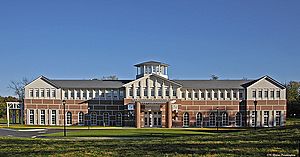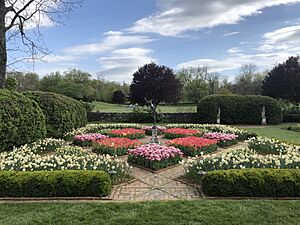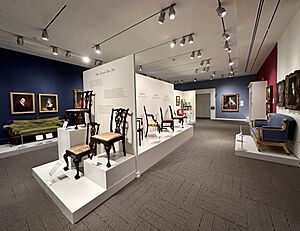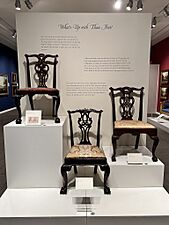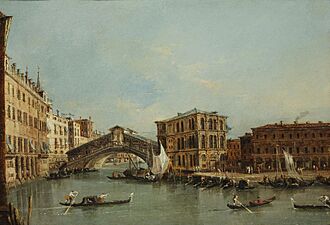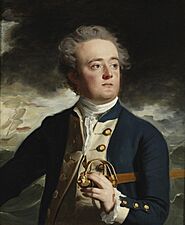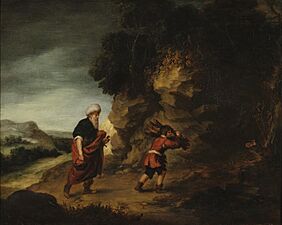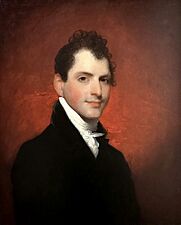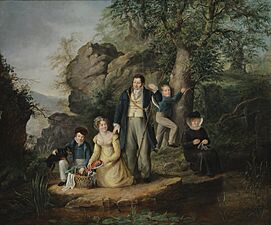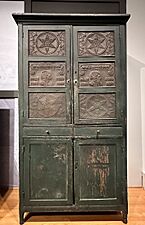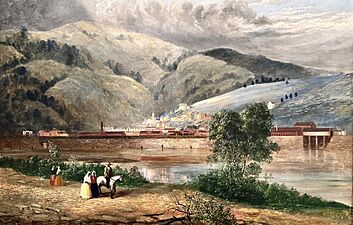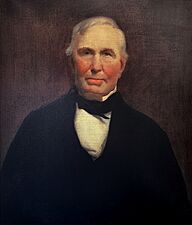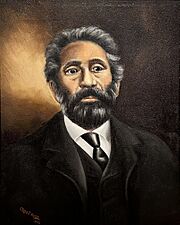Museum of the Shenandoah Valley facts for kids
The Museum of the Shenandoah Valley (MSV) is a cool place to visit in Winchester, Virginia. It's located at 901 Amherst Street. This museum helps keep the history and culture of the Valley alive. It sits on the biggest green space in Winchester. The MSV has a museum building designed by a famous architect named Michael Graves. It also has seven acres of beautiful gardens and the historic Glen Burnie House, which is very old. In December 2024, Scott Stroh became the new leader of the museum.
Contents
Glen Burnie House: A Historic Home
The Glen Burnie Historic House has a long history. It started with a surveyor named James Wood. He settled on this land in the early 1700s. He even gave some of his land to help start the city of Winchester, Virginia in 1744. His son, Robert Wood, built the main part of the Glen Burnie House in the 1790s.
The house stayed in the Wood and Glass families for many years. Finally, Julian Wood Glass Jr. bought it in 1955. He was the last person from the Wood family to own the house.
Starting in 1959, Julian Wood Glass Jr. and his partner, R. Lee Taylor, turned the house into a grand country estate. They also designed the amazing Glen Burnie Gardens. Before he passed away in 1992, Julian Wood Glass Jr. set up a foundation. He wanted the house and gardens to open to the public as a museum. The Glen Burnie Historic House & Gardens opened its doors in 1998.
Today, you can see signs and displays that tell the stories of the people who lived in the house from 1796 to 1992. There are also new exhibits shown every year in the drawing room. This house is listed on important lists like the National Register of Historic Places.
Exploring the Gardens
The gardens around the Glen Burnie Historic House are truly special. They were started in 1956 and grew over many years. These gardens were made for big parties and events. They feature cool sculptures, fountains, and even fun little buildings called folly buildings.
Some of the highlights include gardens filled with roses, statues, vegetables, and plants from Asia. There's also a pond in the Water Garden that has golden trout! In the fall, the garden hosts "Garden Lights." This is a fun walking tour where you can see amazing light displays.
The Museum Building
The main Museum of the Shenandoah Valley building was designed by the famous architect Michael Graves. It first opened to visitors in 2005. The museum has four main areas, each with different things to see.
Shenandoah Valley Gallery: History and Art
This large gallery tells the long story of the Shenandoah Valley. It covers everything from ancient times to more recent history. You can see many different things here. There are videos, interactive displays, pictures, maps, and even small models called dioramas.
You'll also find beautiful art and crafts. These include furniture, special folk art called fraktur, silver items, baskets, and textiles. The Valley is also known for its ceramics and long rifles, which are on display. In 2021, the museum opened a special exhibit called "Contributions: African Americans in the Shenandoah Valley." This exhibit shows the important things Black people have done in the region.
Founders Gallery: Special Collections
The Founders Gallery often shows different exhibits. These exhibits usually include items from the private collection of Julian Wood Glass Jr. He was a very important supporter of the MSV.
R. Lee Taylor Miniatures Gallery: Tiny Worlds
This gallery is super cool! It has an amazing collection of tiny houses and rooms. These were made by R. Lee Taylor (1924–2000). He lived at Glen Burnie for many years. When he passed away, he had put together fourteen fully furnished miniature rooms and houses.
You can see five houses and four rooms by R. Lee Taylor here. They show the work of more than seventy-five miniature artists. There are also four shadowboxes made by another Valley artist, William P. Massey. He created his tiny art between the 1930s and 1940s.
Changing Exhibitions Gallery: New Discoveries
This gallery always has something new to see! Several temporary exhibits are shown here throughout the year. This means there's always a reason to come back and visit the museum.
Selected Highlights from the Collection
-
A View on the Grand Canal with the Rialto Bridge (1754), by Francesco Guardi
-
Captain John Loring (1780), by John Singleton Copley
-
Hugh Chamberlain (1780s), by Johan Zoffany
-
Elizabeth Taylor, Mrs. Charles Chaplin (1781), by George Romney
-
Abraham and Isaac (1787), by Gainsborough Dupont
-
George Alexander Otis (1809), by Gilbert Stuart
-
George Washington (1840s), by Rembrandt Peale
-
Martha Washington and George Washington (around 1850), by Jane Stuart
-
Storer College, photographed between 1870-1890
See also


